

Gold and silver
by
Mike Oettle
JUST two colours – or rather, colour-names – fall usually into the heraldic category of metals: or (gold) and argent (silver).

They can be said to be the backbone of armorial contrast, since one or other of them almost invariably appears in any heraldic design.
The rule of tincture states that they should not appear in contrast with each other, although there are a few examples of arms that flout this rule. The best-known example is that of the Crusader Kingdom of Jerusalem, which had a gold cross (with four small crosses) on silver.
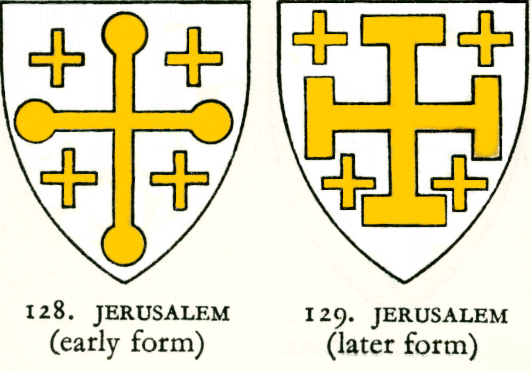
Fox-Davies[1] has this to say about the use of the heraldic metals in practical use:
“The metal gold, otherwise ‘or’ is often represented in emblazonments by yellow: as a matter of fact yellow has always been used for gold in the Register Books of the College of Arms, and Lyon Office has recently reverted to this practice. In ancient paintings and emblazonments the use of yellow was rather more frequent than the use of gold, but gold at all times had its use, and was never discarded. Gold seems to have been usually used upon ancient patents, whilst yellow was used in the registrations of them retained in the Offices of Arms, but I know of no instance in British armory in which the word yellow has been used in a blazon to represent any tint distinct from gold.
“With regard to the other metal, silver, or, as it is always termed, ‘argent’, the same variation is found in the usage of silver and white in representing argent that we find in yellow and gold, though we find that the use of the actual metal (silver) in emblazonment does not occur to anything like the same extent as does the use of gold. Probably this is due to the practical difficulty that no one has yet discovered a silver medium which does not lose its colour.
“The use of aluminium was thought to have solved the difficulty, but even this loses its brilliancy, and probably its usage will never be universally adopted. This is a pity, for the use of gold in emblazonments gives a brilliancy in effect to a collection of coat-armour which it is a pity cannot be extended by an equivalent usage of silver. The use of silver upon the patents at the College of Arms has been discontinued for some centuries, though aluminium is still in use in Lyon Office. Argent is therefore usually represented either by leaving the surface untouched, or by the use of Chinese white.”
Aside from the opinions of experts, it is indeed, most impressive to use gold leaf or gold dust in printing a coat of arms that contains the metal or, or to stitch a blazer badge in gold thread.
And modern technology probably has come up with an equivalent finish for argent.
But for most purposes this is impractical for reasons of sheer expense.
A school might well have its honours blazer badges stitched in gold – but it would be sheer insanity to use gold for ordinary pupils’ blazer badges. Yellow thread is more than adequate.
There are further drawbacks to the use of metallic colours.
Metallic inks do not give a good appearance. Metallic gold looks bronze and frequently scans as dirty brown.
And a common mistake is the use of grey cloth or thread where white is the proper substitute for argent.
Mediæval knights often did have their shields made up with gold and silver (or the nearest equivalent, if they could not even afford a gilt finish), but their banners, standards and other flags usually incorporated plain yellow and white in place of gold and silver.
There has been an attempt to assert that in British heraldry, white has been acknowledged as being a distinct colour, but this would seem to be an occasional aberration on the part of the heralds, where the argent labels on which British royals carry their marks of difference have in rare instances been blazoned as “white” instead. However, the opinion of Brooke-Little (in a footnote in Fox-Davies) is that this was no more than an error.
What is more, his investigation into this point also shows that the idea that white or silver labels are, in England, reserved for royalty, has no foundation whatever. Labels have always been applied in the most suitable contrasting colour.
But in one part of Europe there is, nonetheless, a region where white and silver do sometimes contrast – at least according to one source. Von Volborth,[2] after elaborating on the interchangeability of silver and white across most of Europe, writes:
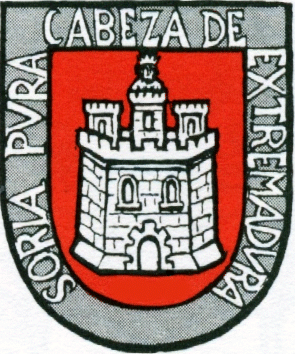
“It is one of Spanish heraldry’s specific features that this rule is not necessarily followed, for not only may white and silver be used in the same coat of arms, but they may be found one on top of the other.”
Shown here are the arms of the Castilian city of Soria, where the border argent is inscribed with a motto in white (the inscribing of a motto on a shield, especially a border, is another characteristically Spanish practice).
However, Santiago Dotor, of Madrid, disputes this. He writes: “Soria’s arms is a quite exceptional example
(as that of Jerusalem would be regarding the rule of tincture) and . . . I
have not found another example of white on silver (or yellow on gold)
anywhere in Spanish heraldry.”
And to this I should add that I have seen, on International Civic Arms, an illustration of the arms of Soria showing the motto inscribed in black rather than white, but strangely with the silver of the border still indicated in a black stipple, rather than white.
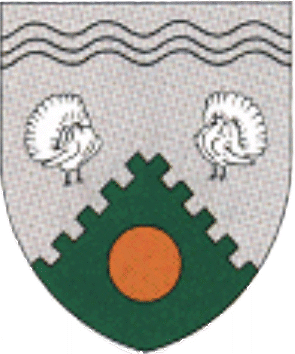
However at left is the armorial device of the Comando Logístico e Administrativo da Força Aérea (the Logistical and Administrative Command of the Portuguese Air Force), which incorporates two white peacocks on a silver field.
Two other metals have made their appearance on the heraldic scene, while claims have been made for a third.
One is limited to German heraldry, as far as I am aware, and is rare: Eisengrau, or iron-grey. Its rarity would account in part for its normally not appearing among the metals, and it would seem that where it is acknowledged, it is accounted one of the ordinary colours.
The second is copper, which has occurred in one or two recent grants (it is mentioned in this article by David B Appleton in Baronage Magazine) and – if properly executed – should make a fine addition to the range of choices available to the heraldic designer.
There are, however, drawbacks to this. The editor of Baronage magazine pointed out, in response to an inquiry as to whether the arms illustrated in Appleton’s article contained the colour rose or the metal copper, that “copper is darker and has more of a metallic gleam – very difficult to use on a computer without varying the tone to simulate the effect of changing light”.
This difficulty of execution would tend to limit its application.
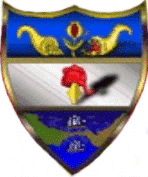
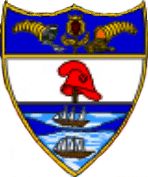
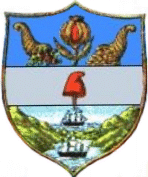
Finally, it is reported that the national coat of arms of Colombia, in South America, features a fess not of argent but of platinum.
The armorial device is irregular, to say the least, since not only does the shield outline carry a gold fimbriation, but so does the fess. In addition, the base of the shield shows a landscape element in the form of two ships on either side of an isthmus.
The arms have been in use since at least the 1920s, but have undergone periodic artistic “improvements”. The most recently adopted version, dated 1991, features shading in the background colour in all three fields, a finish to the fess that suggests a shiny white metal and shadows to the charges, notably the Phrygian cap on the fess.
It has been claimed that the occurrence of platinum in the Colombian arms is proof that platinum is a heraldic colour.
However, in heraldic representation is impossible to distinguish between silver and platinum, and while it is appropriate for Colombia to feature a metal which it produces in quantity, it must be seen from an armorial perspective as little more than a variation on argent.
